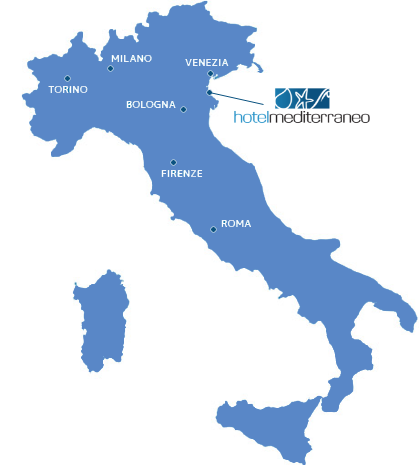There are many islands dotting the Venetian Lagoon. We’ll tell you about four of them, which are among our favourites. Colours, history, architecture, local specialities: a unique way of experiencing the Lagoon in its deepest form.

The name Murano is tied to the art of glass blowing. The Museo del Vetro (Glass Museum) is the island’s most popular attraction. Its collection includes artistic creations and relics from all eras, from the first centuries after Christ to the 20th century. A curious fact. The Golden Book of the Magnificent Community of Murano contains the names of the Murano families, custodians of this glass-making art and founders of the most famous glass factories in the world. You can also visit the Cathedral of Santa Maria and San Donato, dating back to the 7th century, as well as the lighthouse made of Istrian stone.

The Island of colours, Burano is known for its brightly coloured houses and lace needlework. In actual fact, the built-up centre covers a total of four islands, in the southern part of the Venetian Lagoon. The only square in Burano is Piazza Galuppi, lined with typical restaurants and souvenir shops. In a Gothic residence next to the Palazzo del Podestà, you can visit the Museo del Merletto (Lace Museum): it houses more than two-hundred unique pieces from the local school’s collection. Burano’s most colourful house? That of Bepi Suà, just behind the square. Other brightly coloured homes can be found in Via Giudecca, Via San Mauro and Via San Martino Sinistro. Meanwhile at the Pescarìa Vecia, the town’s oldest fish market, you can treat your eyes to truly breath-taking sunsets: it’s the preferred location for photographers and romantic couples! A gourmet stop? The taverns of Burano serve “Gò Risotto”, the island’s traditional dish, and “Bussolà”, the Buranello sweet par excellence.

Ernest Hemingway loved it. Torcello emerges immediately to the north of Burano: it’s a small refuge for travellers in search of beauty. The island has a population of about 20 people, all of whom live in ancient farmhouses and small didactic farmsteads, and has many traces of the Byzantine age; among these, the Church of Santa Fosca and the Basilica of Santa Maria Assunta. Halfway along the main avenue leading to the square, which also runs along the Rio Maggiore, you’ll find the Ponte del Diavolo (Devil’s Bridge), the typical Venetian bridge without railings. Purple is the colour of Torcello. It's the purple of the artichokes grown in the island’s vegetable gardens, and of the Thistle flowers that blossom in the summer, not to mention the limonium and Barena flowers.

Of all the Lagoon’s islands, Pellestrina is the one closest to Chioggia. Think of Venice in its most authentic form, but in miniature, with lots of narrow streets and small squares. The sea weaves its way through the mainland in a maze of canals and sneaks in between the multicoloured homes, built very close together. Pellestrina has been a fishermen’s and lace makers’ island since the 15th century. The Strada Comunale dei Murazzi runs across the entire length of the island and ends at the southern tip, where the eighteenth-century dykes in Istrian stone and decorated with friezes, tombstones and capitals, divide the waters of the Adriatic sea and those of the Lagoon. Chioggia can be glimpsed, just past the line of dykes. Alongside Pellestrina is the Ca' Roman natural reserve, home to the herring gull, kingfisher, as well as hawks, Mediterranean gulls and many other birds.


Lungomare Adriatico, 6 | 30015
Sottomarina di Chioggia - Venezia
VAT Number 02736200276